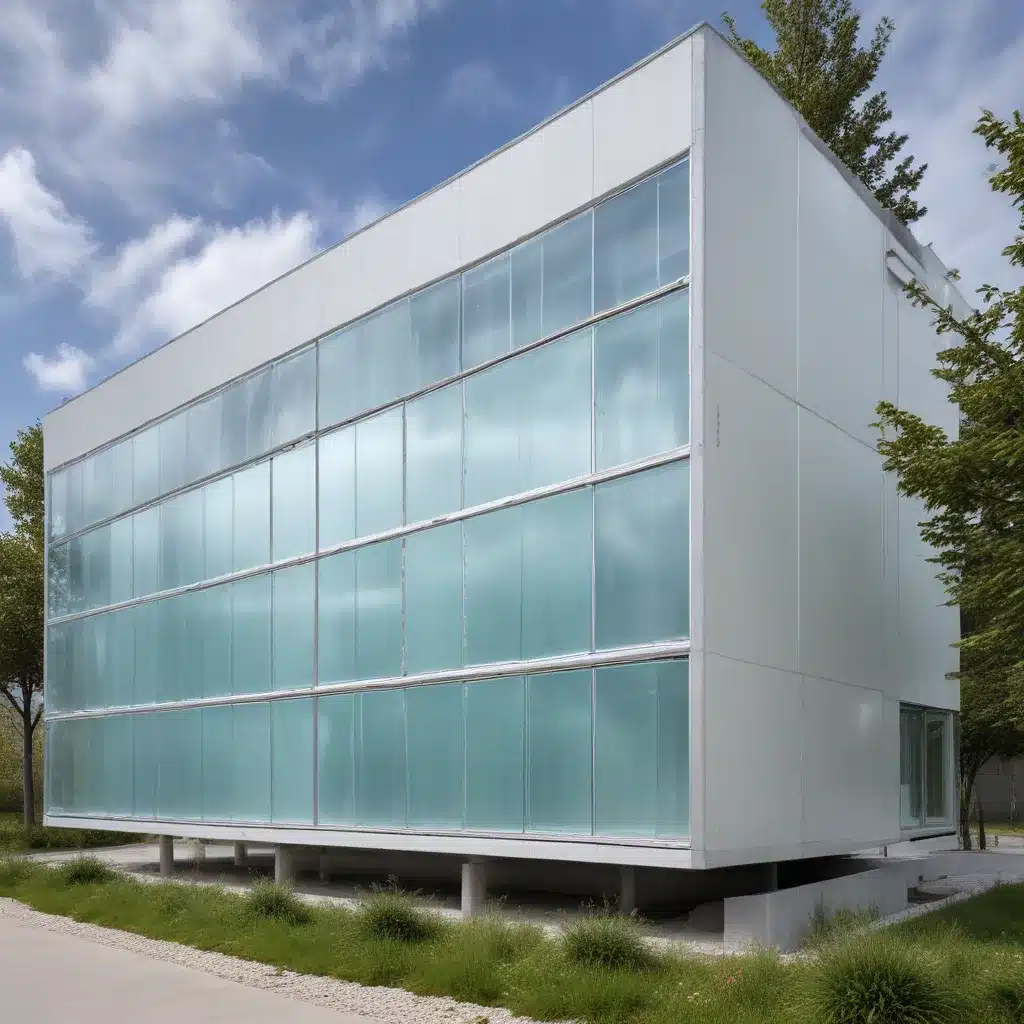
As Europe races to meet its ambitious net-zero emissions targets, the role of the built environment has taken center stage. Architects, engineers, and policymakers are exploring innovative technologies to transform the way we design, construct, and operate our buildings. One particularly promising solution lies in the integration of hydrogen fuel cell systems, which offer a pathway to decarbonize energy use in the built environment.
Hydrogen Applications in Buildings
The potential of hydrogen in sustainable architecture extends far beyond mere energy efficiency. By harnessing the clean-burning and versatile nature of this energy carrier, buildings can become active participants in the hydrogen economy, contributing to a more resilient and low-emission energy ecosystem.
Energy Efficiency and Emissions Reduction
Hydrogen fuel cells can serve as highly efficient combined heat and power (CHP) systems, generating both electricity and usable thermal energy for building operations. This cogeneration approach maximizes the energy output from a single fuel source, minimizing waste and reducing the overall carbon footprint of a building. Moreover, the absence of direct greenhouse gas emissions from hydrogen fuel cells makes them a compelling alternative to traditional fossil fuel-based heating and power systems.
Hydrogen Fuel Cell Integration
Integrating hydrogen fuel cells into building design requires careful consideration of factors such as available space, fuel storage, and the building’s energy load profile. Architects and engineers must collaborate to seamlessly incorporate these systems, ensuring they complement the overall architectural vision and function harmoniously with other building systems, such as HVAC and energy management.
Building Design Considerations
The adoption of hydrogen fuel cells also necessitates changes in building design principles. Architects must account for the safe storage and handling of hydrogen, as well as the potential need for specialized ventilation and fire safety systems. Additionally, the integration of hydrogen infrastructure, including fuel distribution and refueling stations, can influence the siting and layout of buildings within a larger urban context.
Hydrogen Production and Storage
The successful implementation of hydrogen fuel cells in buildings relies on the availability of a reliable and sustainable supply of hydrogen. This, in turn, requires advancements in hydrogen production and storage technologies, as well as the development of distribution networks.
Renewable Energy Integration
One of the key benefits of hydrogen is its ability to serve as an energy storage medium, enabling the integration of intermittent renewable energy sources, such as solar photovoltaics and wind turbines, into building energy systems. By using renewable electricity to power electrolyzers that split water into hydrogen and oxygen, buildings can store excess energy for later use, providing a flexible and resilient energy supply.
Hydrogen Storage Technologies
Efficient and safe hydrogen storage is crucial for its widespread adoption in buildings. Researchers are exploring various storage methods, including compressed gas, liquefied hydrogen, and metal hydrides, each with its own advantages and challenges in terms of energy density, cost, and safety considerations.
Distribution Infrastructure
The development of a robust hydrogen distribution infrastructure, encompassing pipelines, tanker trucks, and refueling stations, is essential for enabling the widespread use of hydrogen in buildings. Policymakers, utility companies, and industry stakeholders must collaborate to establish the necessary regulatory frameworks and invest in the necessary infrastructure to support the hydrogen economy.
Building Energy Systems
The integration of hydrogen fuel cells into building energy systems can have far-reaching implications, transforming the way we generate, distribute, and consume energy within the built environment.
HVAC Applications
Hydrogen fuel cells can be used to power heating, ventilation, and air conditioning (HVAC) systems, providing both electricity and thermal energy for heating and cooling. This combined approach can significantly improve the overall efficiency of a building’s energy use, reducing reliance on traditional fossil fuel-based systems.
Power Generation
In addition to HVAC applications, hydrogen fuel cells can be used to generate on-site electricity for buildings, reducing dependence on the grid and providing a more resilient and sustainable power supply. This can be particularly beneficial in areas with unstable grid infrastructure or a high prevalence of power outages.
Smart Grid Integration
As the hydrogen economy takes shape, the integration of building-level hydrogen systems with larger smart grid networks will become increasingly important. By coordinating the production, storage, and distribution of hydrogen within a broader energy ecosystem, buildings can participate in demand-response programs, energy trading, and other grid-balancing services, further enhancing the sustainability and resilience of the energy system.
Sustainable Design Principles
The incorporation of hydrogen fuel cell technology into buildings must be aligned with overarching sustainable design principles, ensuring a holistic approach to energy efficiency, renewable energy integration, and life cycle considerations.
Passive Design Strategies
Passive design strategies, such as optimized building orientation, thermal insulation, and natural ventilation, can work in tandem with hydrogen-powered systems to minimize overall energy demand and maximize the efficiency of the building’s energy systems.
Renewable Energy Systems
By combining hydrogen fuel cells with on-site renewable energy generation, such as solar panels or wind turbines, buildings can create a self-sustaining energy ecosystem, reducing their reliance on the grid and contributing to the decarbonization of the broader energy system.
Life Cycle Assessment
When evaluating the sustainability of hydrogen-powered buildings, it is crucial to consider the entire life cycle, from the embodied energy and carbon emissions associated with the manufacturing and construction process to the operational efficiency and end-of-life considerations. A comprehensive life cycle assessment can help guide decision-making and ensure the long-term viability of hydrogen-integrated building designs.
The integration of hydrogen fuel cells into sustainable architecture represents a promising frontier in the quest for a more energy-efficient and low-emission built environment. As Europe continues to lead the charge in the hydrogen economy, the harmonious integration of this technology into building design and operations will be a critical component of the region’s broader decarbonization efforts. By embracing the versatility and clean-burning nature of hydrogen, architects, engineers, and policymakers can unlock new possibilities for a truly sustainable built environment.






